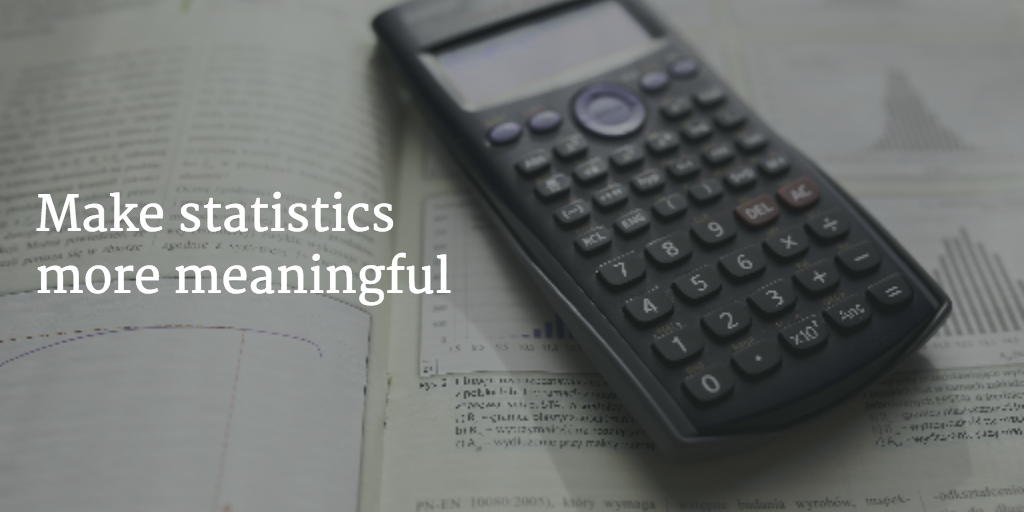
Let’s play a game. Pretend I’m pitching you a fictional business.
“Since launching 29 months ago in 12 cities across 4 states we’ve acquired 208,000 users and 195,000 daily active users averaging a 10.5 percent monthly user increase over the last 7 months.”
Now here comes the important part.
There were a lot of statistics listed there, right?
Close your eyes and remember as many as you can.
How’d you do? There were seven statics in that paragraph.
Did you remember all seven? Three? Any of them?
There’s a good chance you didn’t. Let’s try this again.
“Someone new is signing up for our product every two minutes. Just last week I was in an elevator with three strangers. The elevator broke down and we were stuck for a few minutes. We all got to talking. When I told them what I did, all three said they knew of our product and two of them had signed up in the last month.”
Now try to remember? Easier right?
The numbers in the second example are smaller, but they’re more human. People can wrap their head around it. You can almost imagine a long line of people, someone stepping forward to sign up every two minutes. And that story — randomly stuck in the elevator and two of three strangers happen to be customers — that will be sticking with you.
We’re living in a big data revolution. With the exploding growth of computer processing power came an unheard of ability to collect and gather statistics. We have more data and statistics available to us than any other generation that ever lived.
Unfortunately, people don’t always respond to data the way we think they will. Computers can happily be pummeled with numerical data. They will store it and remember it nicely. That’s kind of what they’re best at. People, however, are still people. If you want to make your message memorable with a person, unleashing mounds data will not work. Statistics are still important. It’s good to make decisions with them. But if you want to maximize the impact of statistics, you’re going to have to persuade people. And to do that, you’re going to have to use fewer statistics.

How statistics outsmarted Stanford students
Chip Heath teaches management at Stanford University and a class titled “Making Ideas Stick.”
For one exercise in the course, Heath presents the students with a set of data on violent crime in the United States. The students are asked to each give a 1-minute presentation on the topic. Half the students will argue that violent crime is a problem in the country, the other half will argue that it is not a problem.
The students then rank the speeches they’ve heard and are told the exercise is over. Heath shows a few minutes of a Monty Python clip to kill time. Afterward, the students are told to pull out a piece of paper and write down everything they can remember from each speech they heard.
There were only eight 1-minute speeches to remember. And only about 10 minutes had passed. On top of that, these are very smart and high-achieving Stanford students.
“And yet the students are lucky to recall one or two ideas from each speaker’s presentation,” Heath and his brother, Dan Heath, wrote in their book “Made to Stick: Why Some Ideas Survive and Others Die.”
“Many draw a complete blank on some speeches — unable to remember a single concept,” they write.
What happened? The raw data didn’t stick. While 63 percent of students included a statistic in their speech, only 5 percent remembered any individual statistic.
And only 10 percent of students included stories in their presentation, but 63 percent of them remembered the stories.

The problem: these high-achieving students were conditioned to give information dense with facts. From the authors:
“One of the worst things about knowing a lot, or having access to a lot of information, is that we’re tempted to share it all. High school teachers will tell you that when students write research papers they feel obliged to include every unearthed fact, as though the value were in the quantity of data amassed rather than in its purpose or clarity. Stripping out information, in order to focus on the core, is not instinctual.”
The students that made memorable presentations, however, were not exactly the most charismatic or dynamic speakers. Some of them even spoke English as a second language. Yet they had an unfair advantage.
“The stars of stickiness are the students who made their case by telling stories, or by tapping into emotion, or by stressing a single point rather than 10.”
The 2 (and only 2) best ways to get more out of less with statistics
1. Align your efforts around one priority.
At AppSumo, co-founder Noah Kagan noticed a problem with the company’s dashboard in 2012. It was a tool to measure company progress, but it was a like a control panel out of NASA — labels and percentages and charts every which way.

In 2013, the company radically simplified its dashboard based on its one big goal for the year: help 3,333 people create their own $1,000 a month business. The dashboard was just one big number, a live indicator their progress toward that one goal. A smaller number below showed the figure as a percentage of 3,333. That was it.
It helped the business have its best year yet, Kagan wrote.
“Notice the difference? Focusing on one specific thing helped us say no to other distracting things and accomplish our goal,” he wrote.
2. Make your statistics people sized
We know $1 billion is a lot of money. But how big is a pile of 1 billion $1 bills? Would it fill up a car? A house? A grocery store? If you’re anything like me, you have no clue. When I was a kid, I learned that Scrooge McDuck was filthy rich because he could swim through a pile of gold coins. How much did he have? Who cared. The dude could swim through money. That’s what made the idea stick.
Gigantic figures are thrown around a lot. But these astronomical figures are too large for us to have any relation to. They’re meaningless. In Fast Company, Chip and Dan Heath compare this to the federal government’s $800 billion stimulus proposal of 2009.
What human being could possibly understand and debate $800 billion in a concrete way. Is that enough money to save the economy? Is it not enough? Who knows?
But make the statistic people sized. With an average income of $50,000, that stimulus becomes roughly seven weeks pay per American. So is a 7-week pay bonus enough of a boost? Now the conversation becomes a lot more clear.
“A good statistic is one that aids a decision or shapes an opinion,” the Heath brothers write. “For a stat to do either of those, it must be dragged within the everyday. That’s your job — to do the dragging. In our world of billions and trillions, that can be a lot of manual labor. But it’s worth it: A number people can grasp is a number that can make a difference.”
P.S. If you liked this article, you should subscribe to our newsletter. We’ll email you a daily blog post with actionable and unconventional advice on how to work better.
